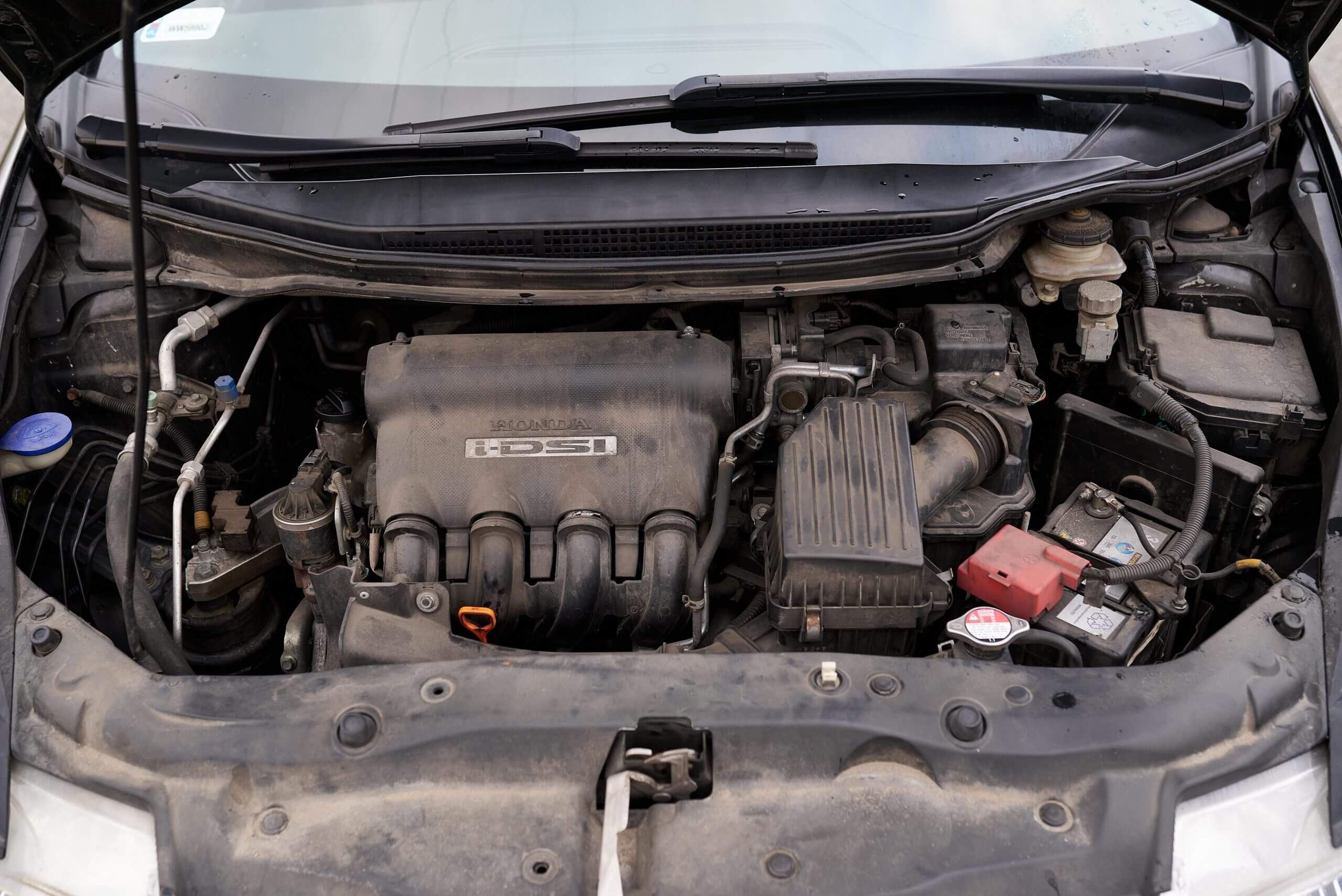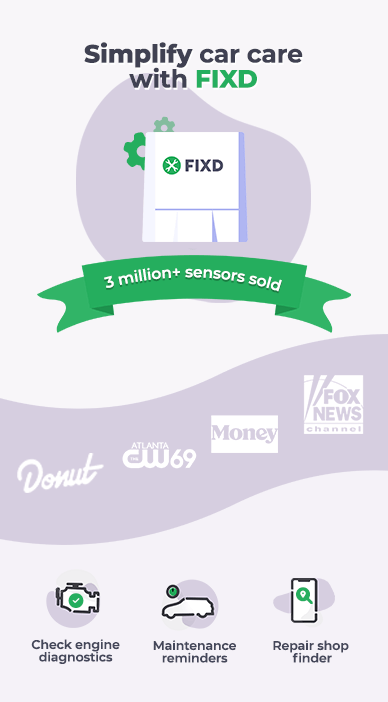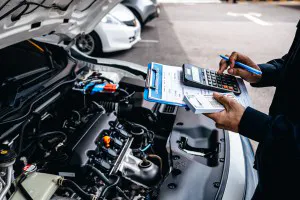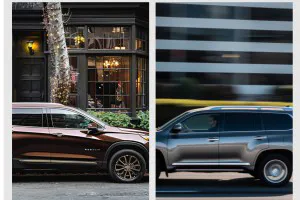What Your 2010 Honda Pilot Warranty Covers
The 2010 Honda Pilot warranty covered several aspects of the vehicle, letting you get repairs and maintenance without having to pay for them out of pocket. Given how long it has been since the 2010 Pilot came out, however, the factory warranty has expired. It’s helpful to know what was covered to understand the different aspects of a 2010 Pilot you can get covered by a new extended warranty today.
Warranties are expressed in terms of time and mileage, with the warranty expiring based on which limit you reach first. A three-year or 36,000-mile warranty will expire after three years, regardless of mileage, or 36,000 miles, whichever comes first.
To make the warranty coverage easy to understand, we’ve constructed this easy table to use as a reference.
| 2010 Honda Pilot Factory Warranty Coverage: | |
|---|---|
| Basic Warranty: | 3 years or 36,000 miles |
| Powertrain Warranty: | 5 years or 60,000 miles |
| Corrosion Perforation Warranty: | 5 years and unlimited miles |
| Battery Warranty: | 3 years and unlimited miles |
| Emissions Warranty: | 3 years or 36,000 miles 3 years or 50,000 miles in some states |
| Total Unique Recalls: | 2 |
Factory Warranty

2010 Honda Pilot Basic Warranty
The basic warranty for the 2010 Pilot was three years or 36,000 miles, depending on which came first. This has now expired. The basic warranty is the coverage that protects against faults in just about every aspect of the vehicle. These faults must have been caused by factory or manufacturing errors. Additionally, some parts of the vehicle that are covered by this warranty may also be covered by their own unique warranties.
2010 Honda Pilot Powertrain Warranty
The powertrain warranty was good for five years or 60,000 miles, and it specifically covered the engine, drivetrain system, and transmission. This has now expired. Note that this applied whether you had front-wheel drive or all-wheel drive. Plus, this warranty depended on whether you maintained your vehicle with regular service, like oil changes, and operated it correctly.
Corrosion Perforation Warranty
The Pilot’s corrosion perforation warranty lasted for five years without a mileage limit. As of 2022, this has expired. Keep in mind that this only covered body panels that have rusted all the way through, not surface rust or paint bubbling. Also, the five-year counter didn’t reset if you took advantage of this warranty and replaced or repaired a body panel in the past. The new panel would only have been covered for the remainder of the original corrosion perforation warranty.
Air Conditioning Warranty
There was no specific warranty for the air conditioner in the 2010 Pilot. Instead, it was covered under the basic warranty. There were limits, however, as air conditioning refrigerant replacement was specifically not covered after the first year unless it was part of another warranty-covered repair.
Paint Warranty
There was no specific paint warranty. Paint defects as a result of poor materials or workmanship at the factory were covered by the basic warranty, but that’s all. Any paint damage that your Pilot suffered as part of a collision or other kind of accident was not covered by any warranty. This includes normal wear and tear as well.
Battery Warranty

The original battery that came with your Pilot was covered for three years with unlimited mileage. This has now expired. Honda would replace your original battery at no charge anytime within the first three years of ownership if it failed prematurely.
Tire Warranty
Honda provided no tire warranty for the 2010 Pilot. Instead, the warranty was issued specifically by the tire manufacturer. You’ll have to contact the manufacturer of your tires for warranty information, but your local Honda dealer can put you in touch with people who can answer your questions.
Emissions Warranty
Emissions systems were covered under federal law, and for your 2010 Honda Pilot you had coverage for up to three years or 36,000 miles after purchase, whichever came first. Those living in states following California’s stricter standards received expanded emissions coverage for up to three years or 50,000 miles, with some parts covered for seven years or 70,000 miles. States following California’s emission standards include Connecticut, Maine, Massachusetts, New Jersey, Oregon, Pennsylvania, Rhode Island, Vermont, and Washington.
The Clean Air Act requires Honda to specifically keep covering the engine computer, catalytic converter, and onboard diagnostics for eight years or 80,000 miles.
For more information about Auto Warranties, you can check out this directory containing everything you need to know about Auto Warranties arranged by system.
Read our article on the difference between recalls, warranty extensions, and technical service bulletins if you’d like to learn about other ways your car may be covered.
2010 Honda Pilot Warranty Extensions Available Upon Car Purchase
When your 2010 Pilot was bought new, there was an option for an extended warranty through Honda. While the details varied based on the individual Honda dealer, it typically extended the basic warranty to eight years or 120,000 miles. Even with that, however, it’d be expired by now.
2010 Honda Pilot Extended Warranty Available Now
Getting coverage for a 2010 Pilot is still possible if you purchase new extended warranty options. They can offer some much-needed protection, though their details will vary based on the state of the vehicle and the mileage on it.
If you’re looking for affordable extended warranty coverage for your 2010 Honda Pilot, check out the FIXD Vehicle Protection Plan. We’ve partnered with CARCHEX, the industry leader in extended warranties, to cover everything from the engine and other powertrain parts to the air conditioning and electrical systems, all for one low monthly fee. There are five levels of coverage available to suit all needs and budgets. Call now for a no-cost, no-obligation quote.
Want to know more about choosing an extended warranty? Check out: 10 Reasons Why an Extended Car Warranty May or May Not Work for You.
Recalls
This was last updated on 08/12/2022. See NHTSA.gov for up-to-date information on recalls.
2010 Honda Pilot EX
- June 27, 2019 – Passenger Frontal Air Bag Inflator May Explode
- May 16, 2019 – Improperly Installed Passenger Air Bag Inflator
- September 27, 2018 – Passenger Frontal Air Bag Inflator May Explode
- April 26, 2018 – Improperly Installed Passenger Air Bag
- January 9, 2018 – Passenger Frontal Air Bag Inflator May Explode
- August 31, 2017 – Incorrectly Installed Replacement Air Bag
- January 10, 2017 – Passenger Frontal Air Bag Inflator May Rupture
- May 24, 2016 – Passenger Frontal Air Bag Inflator May Rupture
- January 18, 2013 – Driver’s Airbag Module may be Missing Rivets
- September 9, 2011 – Seatbelt Stitching
2010 Honda Pilot EX-L
- June 27, 2019 – Passenger Frontal Air Bag Inflator May Explode
- May 16, 2019 – Improperly Installed Passenger Air Bag Inflator
- September 27, 2018 – Passenger Frontal Air Bag Inflator May Explode
- April 26, 2018 – Improperly Installed Passenger Air Bag
- January 9, 2018 – Passenger Frontal Air Bag Inflator May Explode
- August 31, 2017 – Incorrectly Installed Replacement Air Bag
- January 10, 2017 – Passenger Frontal Air Bag Inflator May Rupture
- May 24, 2016 – Passenger Frontal Air Bag Inflator May Rupture
- January 18, 2013 – Driver’s Airbag Module may be Missing Rivets
- September 9, 2011 – Seatbelt Stitching
2010 Honda Pilot LX
- June 27, 2019 – Passenger Frontal Air Bag Inflator May Explode
- May 16, 2019 – Improperly Installed Passenger Air Bag Inflator
- September 27, 2018 – Passenger Frontal Air Bag Inflator May Explode
- April 26, 2018 – Improperly Installed Passenger Air Bag
- January 9, 2018 – Passenger Frontal Air Bag Inflator May Explode
- August 31, 2017 – Incorrectly Installed Replacement Air Bag
- January 10, 2017 – Passenger Frontal Air Bag Inflator May Rupture
- May 24, 2016 – Passenger Frontal Air Bag Inflator May Rupture
- January 18, 2013 – Driver’s Airbag Module may be Missing Rivets
- September 9, 2011 – Seatbelt Stitching
2010 Honda Pilot Touring
- June 27, 2019 – Passenger Frontal Air Bag Inflator May Explode
- May 16, 2019 -Improperly Installed Passenger Air Bag Inflator
- September 27, 2018 – Passenger Frontal Air Bag Inflator May Explode
- April 26, 2018 – Improperly Installed Passenger Air Bag
- January 9, 2018 – Passenger Frontal Air Bag Inflator May Explode
- August 31, 2017 – Incorrectly Installed Replacement Air Bag
- January 10, 2017 – Passenger Frontal Air Bag Inflator May Rupture
- May 24, 2016 – Passenger Frontal Air Bag Inflator May Rupture
- January 18, 2013 – Driver’s Airbag Module may be Missing Rivets
- September 9, 2011 – Seatbelt Stitching
2010 Honda Pilot Warranty Brochure/Booklet
The best way to learn about the warranty limits on the 2010 Honda Pilot is to access the reference material directly. Take a look at the 2010 Honda Pilot warranty booklet.
FAQs
Here are some of the most frequently asked questions about the 2010 Honda Pilot warranty:
What's the Warranty on the Seat Belts?
The seat belt warranty for the 2010 Pilot is quite comprehensive and is one of the few factory warranties that may still be active. Your seat belts are covered for 15 years or 150,000 miles. Just keep in mind that this coverage is for failure to function during normal use and not for any cosmetic or comfort issues.
Are There Benefits to Using Remanufactured Parts?
Remanufactured parts are covered by warranty for a lot longer than standard replacement parts. While replacement parts installed by a Honda dealer are covered for a year or 12,000 miles, remanufactured parts are covered for three years or 36,000 miles, as long as they’re purchased from and installed by a Honda dealer.
What Is Considered Proper Operation?
A lot of warranty requirements necessitate that the Pilot is properly operated, which simply means operating it within its normal limits while getting regular maintenance as needed such as oil changes. This kind of operation includes regular driving, following the speed limit, and using the right kind of gasoline.
All in all, the 2010 Honda Pilot had extensive warranty coverage, but the bulk of the coverage is long gone by 2022. Still, filling in the gaps in coverage left behind from expired warranties is possible by purchasing extended warranties that are available for older vehicles today.
If your factory warranty has expired and you’re looking to reduce out-of-pocket expenses, be sure to check out the FIXD+CARCHEX Vehicle Protection Plan. And remember, the best way to ensure warranty coverage (and prevent costly repairs in the first place) is to follow your manufacturer-recommended maintenance schedule. Get the FIXD sensor and free app today for automated maintenance alerts based on your make, model, and mileage; easy engine diagnostics; a repair shop finder; and more!
Sources:
“2010 HONDA PILOT 4 DR AWD.” NHTSA, www.nhtsa.gov/vehicle/2010/HONDA/PILOT/4%2520DR/AWD%252FFWD.
Honda Warranty Handbook. owners.honda.com/Documentum/Warranty/Handbooks/AWL40976-41388_2010HondaWarrantyBasebook_US(reprint).pdf.

At FIXD, our mission is to make car ownership as simple, easy, and affordable as possible. Our research team utilizes the latest automotive data and insights to create tools and resources that help drivers get peace of mind and save money over the life of their car.














